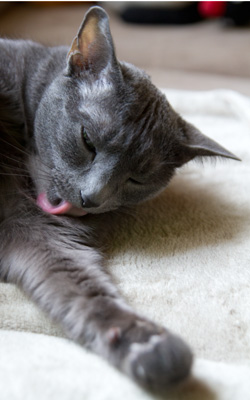russian blue
 The name of the breed, Russian Blue, reveals its origin. Indeed, these cats come from Russia with lots of love! In Russia, Russian Blue cats are considered as lucky charms which bring happiness to their owners. However, although the breed originates from Russia, it has mainly been bred in Britain at the turn of the 20th century and, after the Second World War, in Denmark and Sweden, from where the breed has found its way to Finland.
The name of the breed, Russian Blue, reveals its origin. Indeed, these cats come from Russia with lots of love! In Russia, Russian Blue cats are considered as lucky charms which bring happiness to their owners. However, although the breed originates from Russia, it has mainly been bred in Britain at the turn of the 20th century and, after the Second World War, in Denmark and Sweden, from where the breed has found its way to Finland.
The Russian Blue is said to be a shyish and a quiet cat - just a perfect household pet. But as there are different kinds of people, there are also different kinds of Russian Blues. Some of them might be rather quiet compared to the talkative oriental cats but there are also more social and lively individuals whose soft voice demands you to give them their daily fish, participate in their bizarre cat games or make room for them on the couch. One thing is for sure: all Russian Blues love their family members and enjoy their company.
From the appearance, Russian Blue cats are graceful and elegant, weighing anything between 2,5 to 5 kilos when fertile. The head of the Russian Blue forms a short angle at the level of the eyebrows and the top of the skull is long and flat. From the profile, the jaw should be strong, nose straight and the head should have height - summa summarum, the profile should not resemble that of the the oriental cats. The ears cannot ever be too big or open (at least that is the way I see it) but their placement is what causes lively discussion: should they be high-set or on the side of the head as with their American cousins. I prefer the Scandinavian, almost vertical ear setting. The eyes of the Russian Blue are green at maturity, medium-sized and preferably almond shaped. The beautiful double coat is short and dense with silvery tipping. Because of the tipping, the coat looks different every day: indoors extremely silvery and blond and outdoors even dark grey - or the other way around. In my opinion, the different shades of the coat are best visible in the middle-grey coat.


